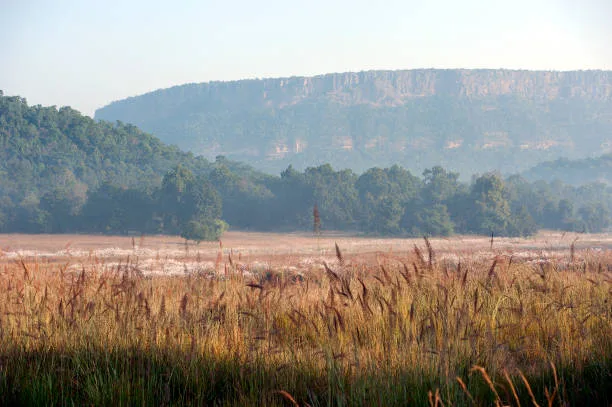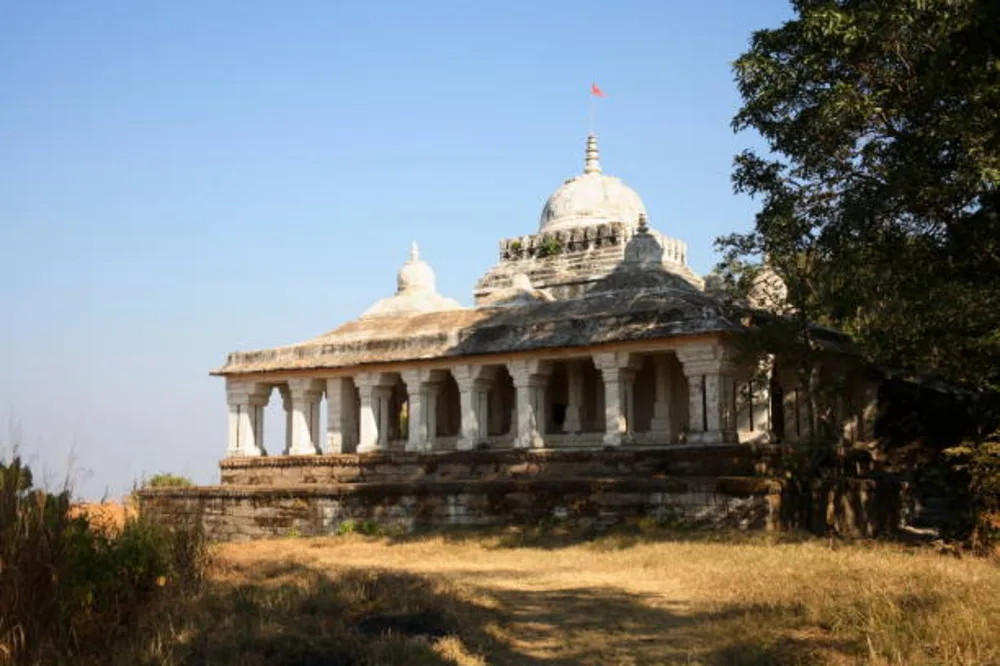Nestled within the lush greenery of the Bandhavgarh National Park in Madhya Pradesh, Bandhavgarh Fort stands as a silent testament to India’s rich historical and cultural heritage. Dating back over 2,000 years, this ancient fort captivates visitors with its breathtaking views, deep-rooted legends, and fascinating architecture. A visit to Bandhavgarh Fort isn’t just a journey through time; it’s an opportunity to immerse yourself in the heart of Indian history, nature, and spirituality.
In this blog, we will uncover the secrets of Bandhavgarh Fort in 7 fascinating steps, taking you through its majestic architecture, cultural significance, and the unforgettable experiences awaiting visitors.
- Bandhavgarh Fort: A Gateway to India’s Ancient Royal Legacy
- 1. The Grand Entrance to Bandhavgarh Fort
- 2. The Legends Behind Bandhavgarh Fort
- 3. Exploring the Architectural Marvels of Bandhavgarh Fort
- 4. Wildlife and Nature Surrounding Bandhavgarh Fort
- 5. Cultural Significance of Bandhavgarh Fort
- 6. How to Reach Bandhavgarh Fort
- 7. Best Time to Visit Bandhavgarh Fort
- Conclusion
Bandhavgarh Fort: A Gateway to India’s Ancient Royal Legacy

Bandhavgarh Fort, standing tall on a hill within the Bandhavgarh National Park, serves as a gateway to the ancient royal legacy of India. With a history spanning over two millennia, the fort has witnessed the reign of several dynasties, each leaving behind imprints of their time in its architecture and culture. Visitors to Bandhavgarh Fort are not only greeted by the beauty of its surroundings but also by the tales of kings, warriors, and sages who once graced its halls. Exploring Bandhavgarh Fort is truly a step back into the grandeur of India’s royal past.
1. The Grand Entrance to Bandhavgarh Fort
Before stepping into the wonders of Fort, one must first appreciate its awe-inspiring location. Set on a hill within the Bandhavgarh National Park, the fort is surrounded by dense forests and wildlife, including the famous Bengal tigers. This is what makes the fort not only a historical marvel but also a wildlife enthusiast’s dream.
The journey to the fort begins with a trek through the national park, where visitors can witness the pristine beauty of nature. As you approach the fort’s entrance, you’ll notice the seamless blend of nature and man-made structures—an architectural feature that makes Bandhavgarh Fort stand out.
2. The Legends Behind Bandhavgarh Fort
The origin of Bandhavgarh Fort is steeped in myth and legend. According to Hindu mythology, the fort was gifted by Lord Rama to his brother, Lakshmana, hence its name: “Bandhav” meaning brother and “Garh” meaning fort. The fort is said to have been a strategic outpost during ancient times, serving as a communication hub and a military fortress for various dynasties.
This sense of history, spirituality, and mythology makes Bandhavgarh Fort more than just a structure; it becomes a sacred space that connects visitors to India’s past.
3. Exploring the Architectural Marvels of Bandhavgarh Fort
The architecture of Bandhavgarh Fort is a reflection of India’s ancient dynasties, particularly the Mauryas and the Kalachuris. As you walk through the ruins, you’ll notice a unique blend of Hindu, Buddhist, and Jain architectural styles, making it a melting pot of cultural influences.
Here is a table highlighting the key architectural attractions:
| Architectural Feature | Description |
| Rama Temple | A temple dedicated to Lord Rama, featuring intricate stone carvings. |
| Statue of Lord Vishnu | A massive 35-foot tall statue of Lord Vishnu in a reclining position, also known as Shesh Shaiya. |
| Ancient Caves | There are several ancient caves near the fort with inscriptions and carvings dating back to the 10th century. |
| The Fort’s Walls | The thick walls of the fort are built using local sandstone, reflecting the defensive nature of the fort. |
| Water Reservoirs | Ingenious water storage systems designed to harvest rainwater, still visible today. |
4. Wildlife and Nature Surrounding Bandhavgarh Fort
A visit to Bandhavgarh Fort is not complete without acknowledging the natural beauty that surrounds it. The fort is situated insideit, home to a diverse range of wildlife, including Bengal tigers, leopards, and over 250 species of birds. While on your way to the fort, you can witness the rich biodiversity that makes Bandhavgarh a haven for nature lovers.
The park itself is divided into different zones, and it falls within the Tala zone, the most popular area for spotting tigers. The combination of history, wildlife, and scenic views makes it an unparalleled destination.
5. Cultural Significance of Bandhavgarh Fort
Over the centuries, Bandhavgarh Fort has served many purposes—from a defensive stronghold to a center of trade and religious worship. The fort is believed to have witnessed the rise and fall of various dynasties, each leaving its own mark on its walls and structures.
The fort was also a center of pilgrimage, with several temples and shrines dedicated to Hindu deities. The spiritual aura of Bandhavgarh Fort makes it a place of peace and reflection, where visitors can connect with the ancient traditions of India.
6. How to Reach Bandhavgarh Fort
Getting to Bandhavgarh Fort is part of the adventure. The fort is located inside Bandhavgarh National Park, and visitors must first enter the park before beginning the trek to the fort. Below are the various ways you can reach :
By Air:
The nearest airport is in Jabalpur, about 200 km away from Bandhavgarh Fort. Flights from major Indian cities land here.
- Cab Fare from Jabalpur to Bandhavgarh: ₹3,500–₹4,500 (approx. $42–$55 USD).
- Bus Fare: ₹500–₹700 (approx. $6–$8 USD).
By Train:
The closest railway station is Umaria, 35 km from Bandhavgarh Fort.
- Taxi Fare from Umaria to Bandhavgarh: ₹800–₹1,200 (approx. $10–$15 USD).
- Public Transport: ₹50–₹150 (approx. $0.60–$1.80 USD).
By Road:
Bandhavgarh is well-connected by road to cities like Jabalpur, Katni, and Rewa.
- Cab Fare: ₹2,500–₹3,500 (approx. $30–$42 USD).
- Self-drive options: Car rentals typically cost ₹2,000–₹3,000 per day (approx. $24–$36 USD).
Once inside the park, visitors must trek approximately 5 km to reach the fort, which takes you through scenic landscapes and lush forests.
7. Best Time to Visit Bandhavgarh Fort
The ideal time to explore is between October and June, when the weather is at its best, offering comfortable conditions for both sightseeing and wildlife exploration. During these months, the Bandhavgarh National Park is also fully open for visitors, allowing seamless access to the fort as well as the surrounding forest and wildlife.
For wildlife enthusiasts, the winter months from November to February are particularly rewarding. The cooler temperatures and dry conditions make this the perfect time for tiger spotting, as the majestic Bengal tigers often come out during the day. Additionally, the winter season offers excellent opportunities to witness other wildlife, such as leopards, deer, and birds, adding an extra thrill to your visit.
While March to June remains good for fort exploration, summer temperatures can soar. However, visiting in these months increases the likelihood of tiger sightings around water bodies. Overall, October to June ensures a fulfilling experience at it, combining both history and nature.
Conclusion
Bandhavgarh Fort is a destination that offers much more than just historical ruins. With its mythical past, stunning architecture, and natural beauty, the fort is a must-visit for anyone looking to dive deep into India’s rich heritage. Whether you’re an adventurer, a history buff, or a nature lover, Bandhavgarh Fort promises an experience that you’ll treasure for a lifetime. So, pack your bags, plan your visit, and discover the majestic beauty of Bandhavgarh Fort!
Explore More
For those looking to experience the magic of India’s ancient heritage, Bandhavgarh Fort offers an unforgettable journey through time. But the adventure doesn’t stop here! Explore more fascinating destinations and historical wonders across India with Xplro.com. Whether you’re planning a wildlife safari, a cultural tour, or simply want to discover hidden gems, Xplro has got you covered.






